HP EliteBook 8760w: Color, So Dreamy
by Dustin Sklavos on August 25, 2011 2:30 AM ESTApplication and Futuremark Performance
It's important to stress in our Futuremark testing that the HP EliteBook 8760w benefits from a last-generation SSD; it may only be running at SATA 3Gbps, but it's still fast. Jarred wrote a pretty decent breakdown of PCMark and PCMark 7 in particular in his review of the Clevo W150HR and I wholeheartedly agree with his observations and conclusions. As for 3DMark, try to remember that though we tested the 8760w in gaming situations it is fundamentally a workstation and thus not intended for you to pwn n00bs at Call of Duty 185: America Mindlessly Pads Bobby Kotick's Bank Account.
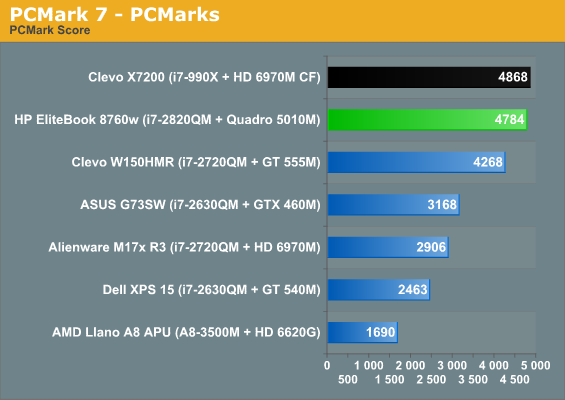
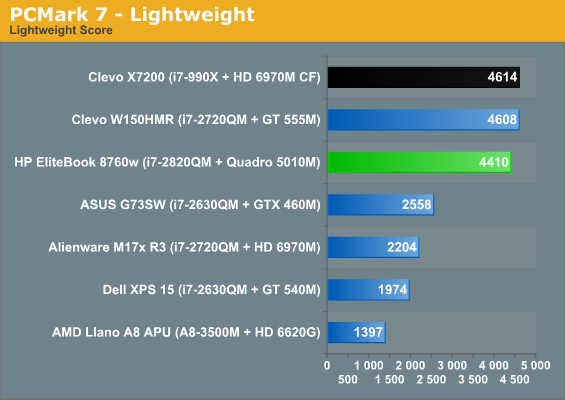
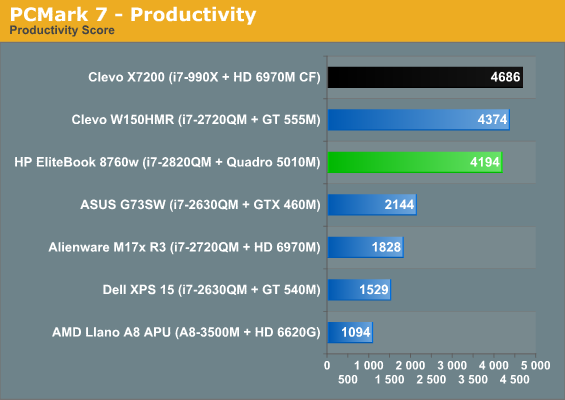


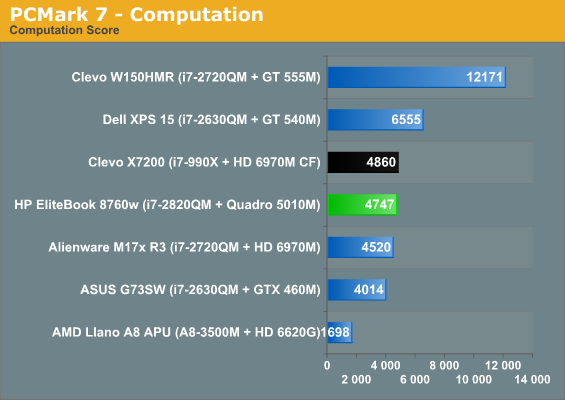
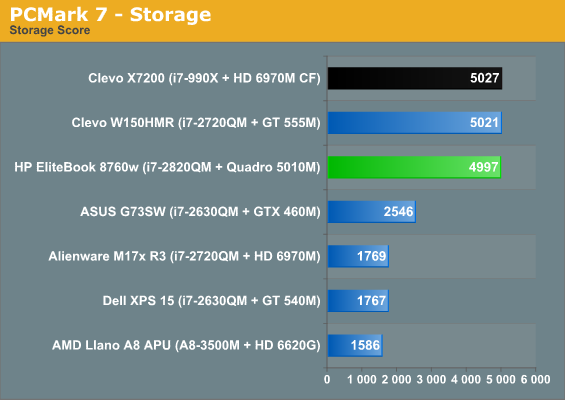
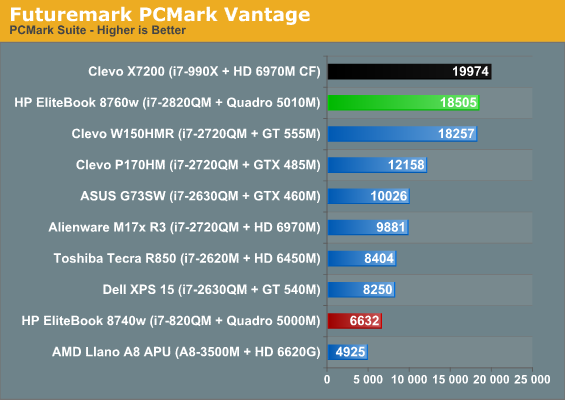
PCMark Vantage and PCMark 7's overall score place the 8760w pretty much exactly where it needs to be, though it's impressive how much it nips the heels of the beefy Clevo X7200 with its hex-core processor and CrossFire graphics solution. Not just that, but it's substantially faster than its predecessor.
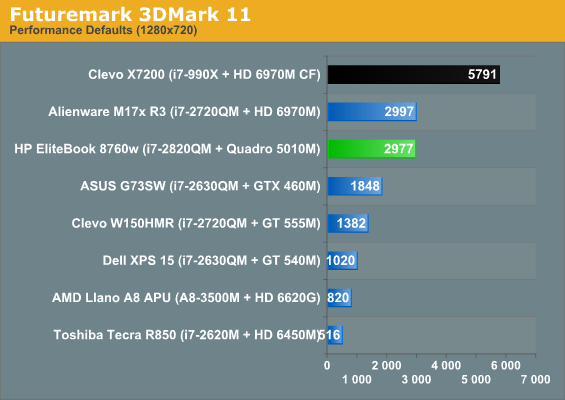
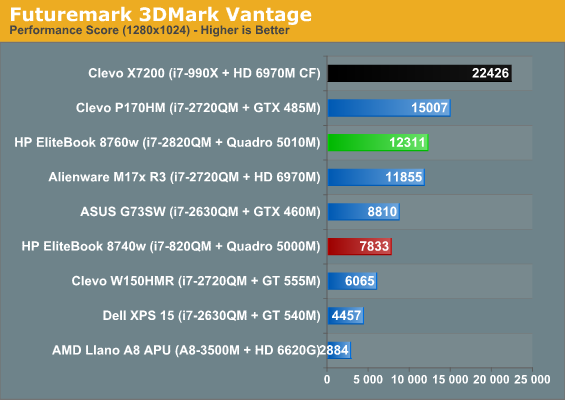
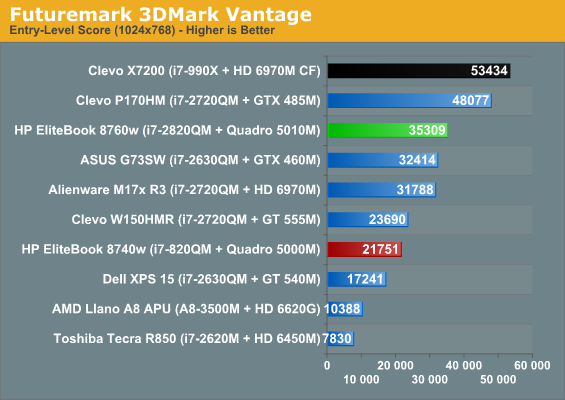
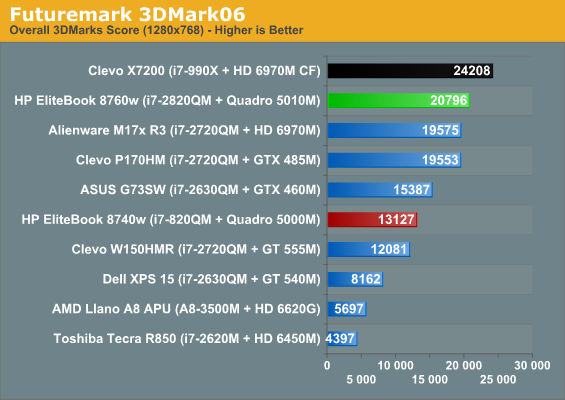
When we get into the 3DMarks, we immediately see major benefits from the additional 64 CUDA cores along with the higher clocks on the NVIDIA Quadro 5010M. That said, we can also see where the increased texturing throughput (64 TMUs in the GTX 485M vs. the 48 in the 5010M) and substantially higher clocks of the GTX 485M make it a far more preferable gaming solution. The 5010M is no slouch, but it's more of a workhorse than anything.
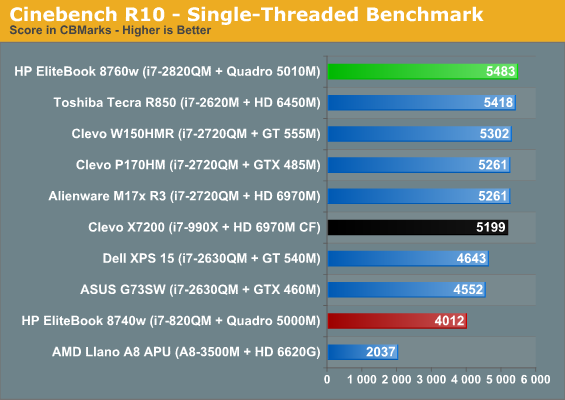
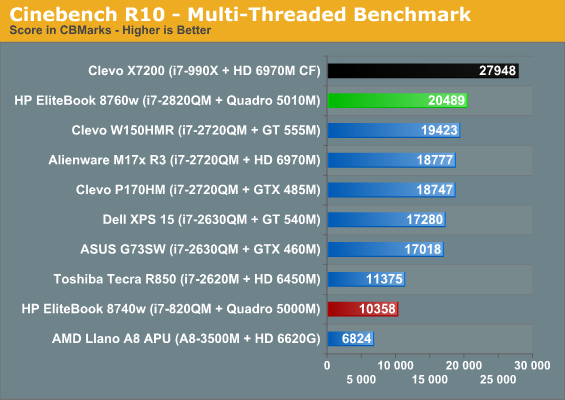
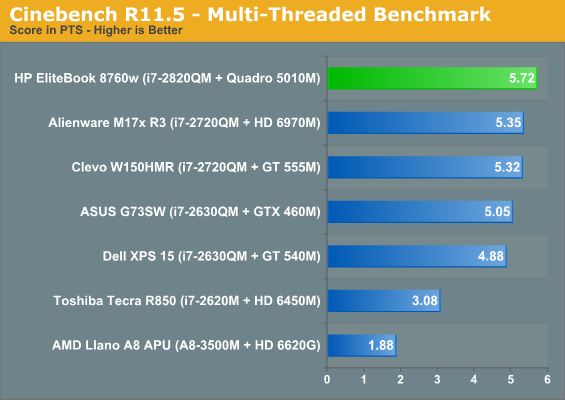
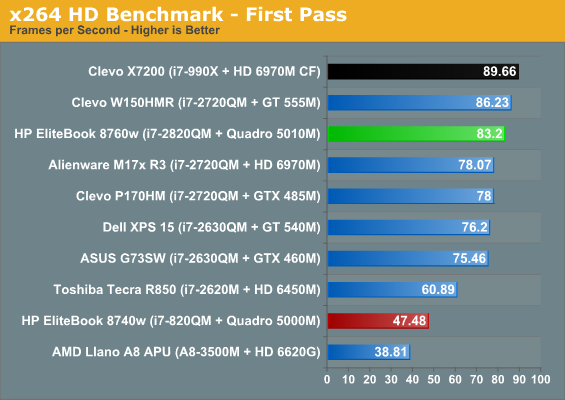
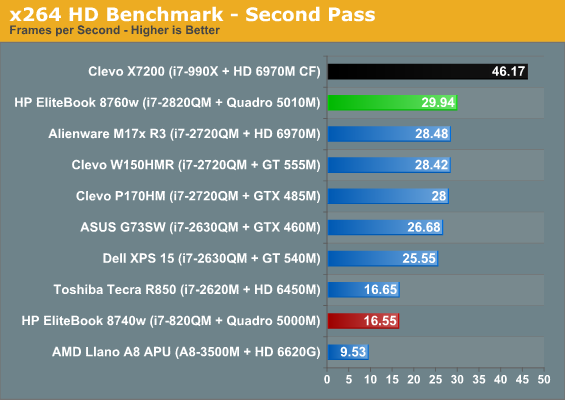
While dual-core processors got a healthy bump in performance in the jump to Sandy Bridge, it's the quad-cores that made out like bandits. In processor-intensive tasks the Intel Core i7-2820QM is often nearly twice as fast as the i7-820QM in last generation's 8740w, making the older notebook a very hard sell. Only the hex-core desktop i7-990X in Clevo's beastly X7200 is consistently faster.










83 Comments
View All Comments
aranyagag - Thursday, August 25, 2011 - link
yeah I was planning to get a 17" DTR with sandybridge-- all was fine and dandy till I Got to the specifications for the screen. Sorry, but I want a 1200p screen. even when I watch videos-- which is rare because I prefer to watch on home theater and use my laptop for work-- I PREFER to have space above/below the screen for the menu bar.Well, I am waiting for the 1200p screens to return and if they don't -- I will eventually settle for a 15.6" 1080p screen. I just am not buying a 17" or larger laptop with only 1080p screen.
oshogg - Thursday, August 25, 2011 - link
17" is a little too big for my taste - I would appreciate a similar in-depth review (great job on this one by the way!) for HP 8560w. Specifically, I am interested in knowing that Quadro 1000M is any less taxing on battery than the one in 8760w.Thanks,
Osho
teng029 - Thursday, August 25, 2011 - link
certainly a much better design than Dell's current Latitude line. i've tried carrying a 17.3 inch notebook before and didn't particularly care for it. and like so many other posters have mentioned, i still prefer 16x10 panels.Spazweasel - Thursday, August 25, 2011 - link
As always, computers of this class are something your employer buys you. Individuals are not likely to pay for items like this, but organizations whose cost-accounting recognizes that the hardware is a small fraction of the cost of maintaining an employee are not going to be put off by a thousand dollar premium. Compared to the software packages that enterprises use, the amortized cost of support and infrastructure, and the salaries of the people that use them, six thousand in hardware is chump change.Buy this one with someone else's money, not your own, and you (and they) get the value expected for something this expensive.
jecs - Friday, August 26, 2011 - link
Thank you, That was what I had in mind for years, but still something I wanted to check over time. I worked for BP years ago and sure they provided fancy hardware and software even for contractors. I remember a Silicon Graphics computer on a corner and it was only used for an advanced student on one study. Today this HP laptop is way too superior but computing requirements may also increase with time.Death666Angel - Thursday, August 25, 2011 - link
I really don't see how the desktop space has somehow "lost" 30" monitors almost entirely. From my experience over the past years, the 30" crowd has been very stable. The 27" high-res didn't destroy anything and gave people a cheap middle ground between cheap 24" 1200p and overpriced 1600p 30" monitors. I think 27" 2560x1440 has been about the only positive development in the desktop monitor market for a long time, partially making up for the move to 1080p in the 21"-27" market.I personally hope the tablet/smartphone display development with high densities will transfer to the desktop market soon.
Dustin Sklavos - Thursday, August 25, 2011 - link
From a conversation with my associate, Brian Klug (who handles our monitor reviews), 30" screens are being phased out of production entirely.zaccun - Thursday, August 25, 2011 - link
Thank god I've already got one then- That almost makes me want to save up and buy a couple more to hoard :<DanNeely - Friday, August 26, 2011 - link
Gah!!! Like zaccun I'm tempted to go after a spare. If the replacement was 2844x1600 I could probably live with the aspect ratio reduction, but for anything resembling work vertical size is more important than width.Death666Angel - Friday, August 26, 2011 - link
Ah, haven't heard anything like that on my regular computer news sites. And I haven't noticed any increase in prices with 30" screens. But I'll keep an eye out for that now. :-)Still, even with them being phased out, I will not pay 1000-1100€ for a 30" 2560x1600 screen when I get a 27" 2560x1440 for 600-650€. The added value for me just isn't there.
Unless I will have a lot of spare money soon I'll try and wait until the pixel density goes to tablet/smartphone levels or at least gets closer to them. :-)